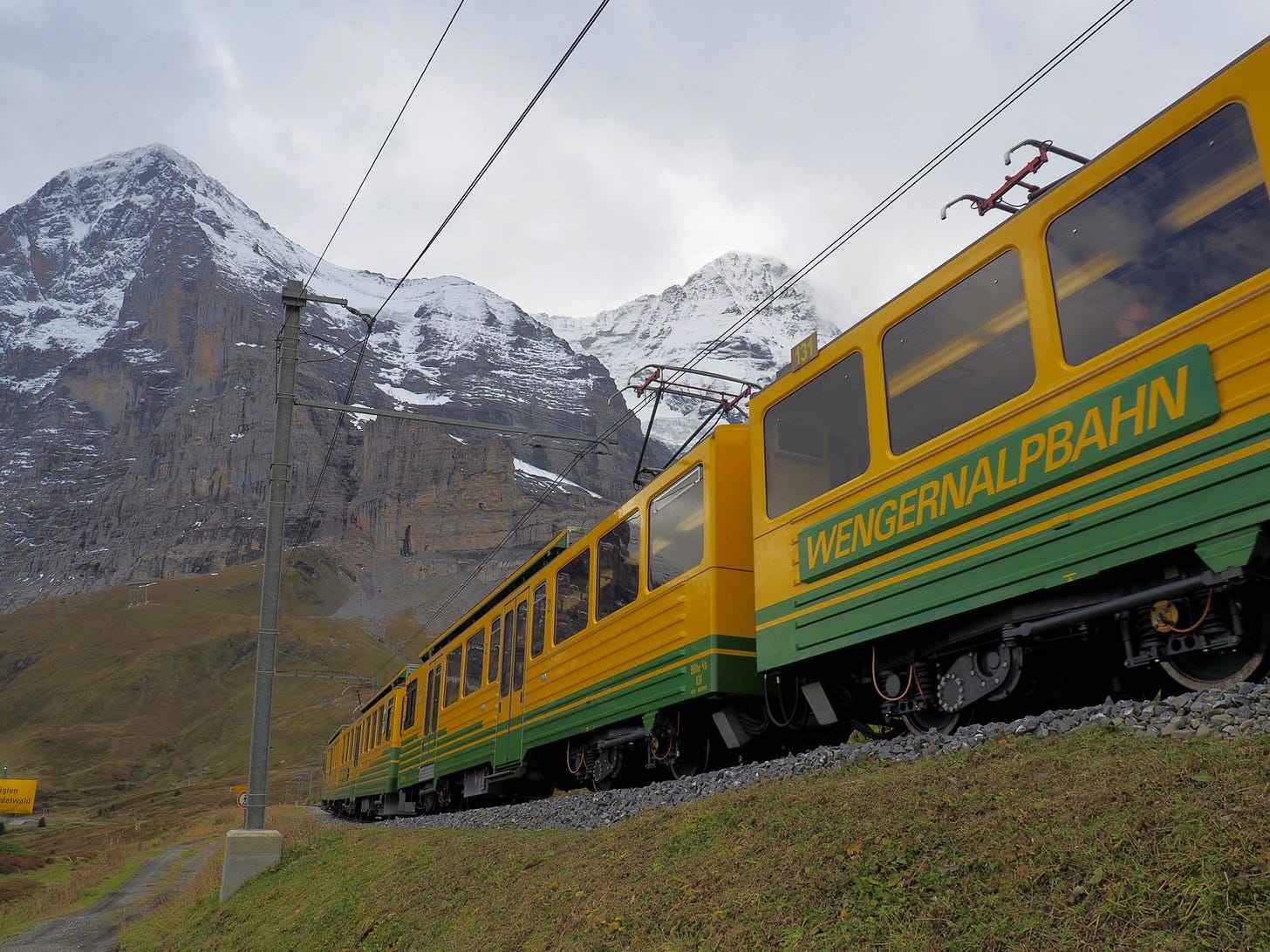What you need to know about Swiss trains
How to choose the right tickets (or passes) for your trip and avoid any fines along the way.
Switzerland has one of the world’s most efficient rail networks, but it can be confusing to understand at first: I think it’s because they want you to cave on the Swiss Travel Pass, which is a great solution if money is no object or you’re on the train every day.
A six-day pass for second class cabins will set you back C$650 and $1,030 for first class, and gives you hop on and off privileges on most (I’ll explain) trains.
Without a travel pass, you’re left navigating dozens of ticket options, and if you pick the wrong one, you risk a hefty fine. Even with a travel pass, you’ll have to manage reservations for busy trains and tickets for bikes and pets. This guide will help you.

As an example, let’s say you’re planning to head from Zurich to Zermatt, an easy trip (even with all the transfers) that takes just over three hours. Zermatt is a ski town with no car access, so you’d actually have no option but to take the train in this scenario.
Step 1: Get organized
First decide whether you’re better served by a rail pass or individual tickets, which will depend on the length of your stay, number of trips you plan to take, and the flexibility you’ll need. If you’re taking multiple train trips a day, a travel pass might be worth it.
Here are all your options:
Swiss Travel Pass: Unlimited train travel for a set number of days.
Half Fare Card: Reduces train ticket prices by 50% for a month.
Regional Pass: Covers specific areas, like ‘Lake Geneva’ region.
Point-to-Point Tickets: A ticket for a single journey or return trip.
You’ll also have the option to choose between first and second class tickets. First class has better seats, more storage, and meal service (at an extra cost) for longer rides. You can always upgrade from a second class ticket, but more on that later.
Step 2: Get the app
SBB Mobile is a great little app that provides real-time timetables, travel updates, and route planning, all in English. You can purchase tickets instantly — covering all Swiss public transport, including trains, buses, trams, and boats — and store them digitally.
If you’ve chosen to buy a Swiss Travel Pass, Half Fare Card, or Regional Pass, you will have to link it to the SBB Mobile app so discounts or reservations are reflected in your account. You can ride most trains in Switzerland without reserving a seat.
Step 3: Book your trip
The efficiency of the Swiss National Railway (SBB) means there are usually several routes that get you where you need to go. Using the same example, you’d have three options to get to Zermatt from Zurich in any given hour outside of 12 a.m. and 6 a.m.
But here’s where it can get tricky.



